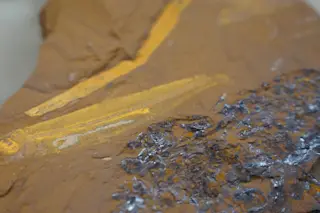Multiple recently discovered specimens of Thylacoleo carnifex have allowed researchers to reconstruct the extinct animal’s entire skeleton for the first time, revising what we know about how Australia’s largest-ever carnivorous mammal moved. Spoiler alert: It appears that, despite weighing in excess of 200 pounds, the animal was an adept climber. Add that skill to the list of traits, including unique flesh-shearing teeth and a lethal thumb claw, that make Thylacoleo so fascinating.
Nicknamed the marsupial lion for its size and formidable teeth, T. carnifex roamed Australia for roughly 2 million years, going extinct only about 40,000 years ago. Thylacoleo was first described in the mid-19th century, based on a skull and jaw fragments that suggested it was a ferocious predator. Paleontologists have debated its actual ecological niche for decades, however, in part because subsequent finds were mostly fragmentary and it was difficult to reconstruct what the animal might have been ...














